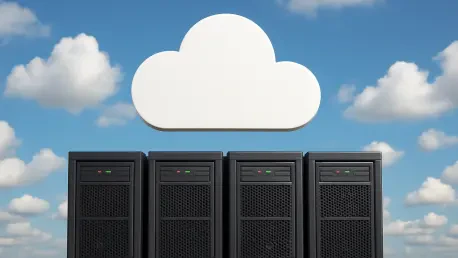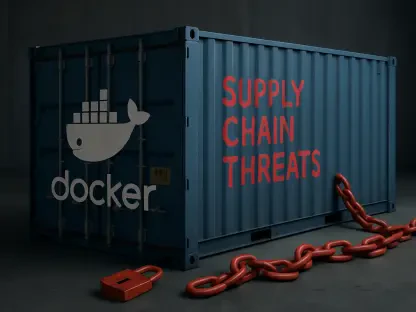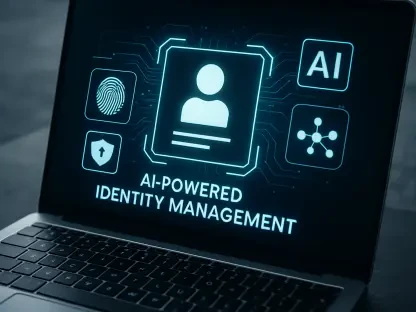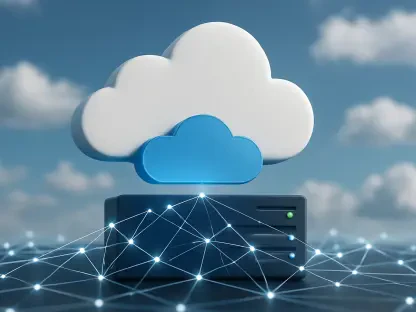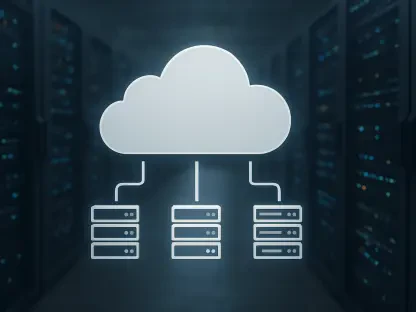In an era where cyber threats loom larger than ever, U.S. government agencies face unprecedented challenges in safeguarding critical infrastructure and sensitive data against sophisticated attacks. From federal departments to local municipalities, the shift to hybrid work environments and rapid cloud adoption has exposed vulnerabilities that traditional security measures often fail to address. As adversaries exploit these gaps with increasingly complex tactics, the demand for innovative, compliant, and efficient solutions has reached a critical point. Cisco Security Cloud Control for Government emerges as a transformative force in this landscape, recently achieving FedRAMP Authorization to affirm its readiness for public sector needs. This platform promises not only to meet stringent federal standards but also to deliver practical tools that empower agencies to navigate a dynamic threat environment. This article delves into the ways Cisco’s cutting-edge solution is reshaping cybersecurity for government entities, addressing pain points and fostering resilience across diverse operational contexts.
Addressing the Evolving Threats in Public Sector Security
Government agencies are grappling with a cybersecurity landscape that grows more intricate by the day, driven by the integration of cloud technologies and the widespread adoption of remote work models. These advancements, while enhancing operational flexibility, often introduce risks to outdated systems that struggle to keep pace with modern demands. Critical infrastructure and sensitive data remain prime targets for malicious actors, whose methods evolve to exploit any weakness. Cisco has recognized that a fragmented approach to security, reliant on disjointed tools, falls short in this environment. Instead, a cohesive, adaptive strategy is essential to protect against breaches that could undermine public trust and national security. The urgency for robust solutions that can anticipate and counter these threats has never been clearer, especially as agencies manage increasingly distributed networks.
Beyond the technological shifts, the compliance burden adds another layer of complexity for government entities striving to meet federal mandates. Standards like FedRAMP are not just checkboxes but vital assurances that systems can safeguard information at the highest level. Cisco Security Cloud Control for Government steps into this space with a platform engineered to tackle both the technical and regulatory challenges head-on. Its recent FedRAMP Authorization serves as a testament to its alignment with stringent security requirements, offering agencies a trusted foundation to build upon. This certification simplifies procurement processes and instills confidence that the solution can handle the unique pressures of public sector operations. By addressing the dual needs of innovation and adherence to policy, Cisco provides a pathway for agencies to modernize without compromising on safety or accountability.
Centralizing Control for Seamless Security Operations
One of the most pressing issues for public sector IT teams is the operational chaos caused by managing multiple, disconnected security tools, often leading to inefficiencies and overlooked vulnerabilities. Cisco Security Cloud Control for Government offers a compelling remedy through its cloud-native platform, which centralizes management into a single, user-friendly interface. This unified approach oversees Cisco Secure Firewalls across various setups, as well as Multicloud Defense for Government, ensuring that security policies remain consistent whether applied on-premises or in cloud environments. By eliminating the need to juggle separate consoles, the platform reduces complexity and minimizes the risk of misconfigurations that could expose critical systems to attack. Such streamlining is a game-changer for agencies seeking to maintain robust defenses without overwhelming their staff.
Furthermore, the impact of centralized control extends beyond mere convenience to fundamentally enhance how government teams operate under pressure. With a consolidated view of security operations, IT personnel can make informed decisions faster, responding to incidents with greater precision. The platform’s design prioritizes ease of use, allowing even teams with limited resources to manage expansive networks effectively. This is particularly crucial for smaller agencies or those with dispersed operations, where maintaining oversight can be a logistical nightmare. Cisco’s solution bridges these gaps by providing a cohesive framework that aligns security efforts across diverse environments, ensuring no corner of an agency’s infrastructure is left unprotected. The result is a more resilient posture that can adapt to the unpredictable nature of cyber threats while keeping operational burdens in check.
Enhancing Real-Time Insights and Threat Mitigation
Visibility into network activity stands as a cornerstone of effective cybersecurity, especially for government agencies navigating the complexities of remote access and distributed systems. Cisco Security Cloud delivers on this front with comprehensive, real-time insights that span on-premises, cloud, and multi-cloud environments. This capability allows teams to monitor traffic patterns, spot anomalies, and analyze user behavior with unparalleled clarity. In a landscape where threats can emerge from any corner—be it a phishing attempt targeting remote workers or a sophisticated attack on critical infrastructure—such detailed oversight is indispensable. Agencies equipped with these tools can detect potential risks early, preventing minor issues from escalating into full-blown crises that could disrupt operations or compromise sensitive data.
Equally important is the speed and accuracy with which threats can be addressed once identified, a challenge Cisco tackles through integrated response mechanisms within its platform. The ability to act swiftly on detected issues, supported by actionable intelligence, empowers government security teams to neutralize dangers before they inflict harm. This proactive stance is vital in an era where delayed responses can have catastrophic consequences, from data breaches to service interruptions. By embedding these capabilities into a single solution, Cisco ensures that agencies are not only aware of their security status but also equipped to maintain it under pressure. The focus on rapid mitigation aligns with the broader goal of sustaining public trust, as government entities demonstrate their commitment to protecting both information and the citizens they serve through decisive, informed action.
Streamlining Operations with Automated Processes
Manual security tasks, such as updating policies or onboarding new devices, often consume valuable time and introduce the risk of human error, particularly in government settings where precision is non-negotiable. Cisco Security Cloud Control for Government counters this inefficiency by embedding automation into its core functionalities. Routine processes that once demanded hours of attention are now handled seamlessly, from migrating legacy systems to the cloud to ensuring consistent policy enforcement across networks. This reduction in manual workload not only saves time but also enhances reliability, as automated systems are less prone to oversight or mistakes. For agencies operating with constrained budgets or limited staff, such efficiency translates into a significant boost in their capacity to maintain robust security without stretching resources thin.
Moreover, automation within Cisco’s platform allows IT teams to redirect their focus toward higher-priority objectives, such as strategic threat prevention and long-term planning. Instead of being bogged down by repetitive administrative duties, personnel can dedicate energy to analyzing emerging risks and fortifying defenses against sophisticated attacks. This shift in focus is particularly beneficial for government entities tasked with protecting critical infrastructure, where proactive measures often make the difference between security and vulnerability. By minimizing the operational drag of manual processes, Cisco empowers agencies to operate with greater agility, ensuring that their security posture evolves in step with the threats they face. The result is a more dynamic approach to cybersecurity that prioritizes both efficiency and effectiveness in safeguarding public sector missions.
Adapting to Growth with Scalable, Cloud-Ready Solutions
Scalability remains a critical concern for government agencies, which vary widely in size and scope, from small local offices to sprawling federal departments managing hundreds of devices across multiple locations. Cisco Security Cloud addresses this diversity with a Software-as-a-Service (SaaS) model that adapts effortlessly to an agency’s specific needs. Whether supporting a handful of systems or an expansive network, the platform scales without sacrificing performance or security. Its cloud-ready architecture ensures accessibility from any location, facilitating real-time collaboration among dispersed teams—a vital feature in today’s hybrid work reality. Additionally, automatic updates keep the system equipped with the latest features and patches, eliminating the need for manual interventions and ensuring agencies remain at the forefront of protection.
The inherent flexibility of a cloud-based solution also positions government entities to future-proof their cybersecurity strategies as technological demands continue to evolve. With Cisco’s platform, agencies can integrate new tools or expand their infrastructure without the headaches of overhauling existing systems. This adaptability is crucial for maintaining operational continuity amid rapid shifts, such as increased reliance on cloud services or the adoption of emerging technologies. The design prioritizes seamless growth, allowing public sector organizations to expand their security capabilities in lockstep with their operational requirements. By offering a solution that evolves alongside agency needs, Cisco ensures that cybersecurity remains a strength rather than a constraint, enabling government bodies to focus on their core missions with confidence in their defensive framework.
Securing Multi-Cloud Environments with Integrated Defense
As government reliance on public cloud platforms like AWS, Azure, and Google Cloud continues to grow, securing these environments has become a paramount concern for maintaining data integrity and operational stability. Cisco’s Multicloud Defense for Government, seamlessly integrated into the Security Cloud Control platform, provides a robust answer to this challenge. This component offers automated asset discovery and comprehensive threat protection tailored for multi-cloud setups, ensuring that vulnerabilities are identified and addressed regardless of where data resides. By unifying these capabilities under a single interface, the platform eliminates the complexity of managing separate security tools for different cloud providers, delivering a consistent protective shield across all environments.
This integrated approach also fosters a deeper level of control over hybrid infrastructures, which are increasingly common in government operations blending on-premises and cloud resources. Multicloud Defense for Government supports features like Infrastructure-as-Code, enabling agencies to embed security into their development processes from the ground up. Such forward-thinking design helps mitigate risks before they materialize, a critical advantage in a threat landscape where prevention often outweighs reaction. For agencies navigating the intricacies of multi-cloud adoption, Cisco’s solution provides clarity and confidence, ensuring that their data remains secure no matter the platform. This holistic protection strategy underscores the importance of adaptability, equipping government entities with the tools to safeguard their digital assets in an ever-expanding technological frontier.
Building a Resilient Future for Government Cybersecurity
Looking back, Cisco Security Cloud Control for Government marked a significant turning point for public sector cybersecurity with its FedRAMP Authorization, affirming its role as a trusted ally for federal, state, and local agencies. The platform’s ability to centralize management, enhance visibility, automate workflows, and scale with agency needs proved instrumental in addressing the multifaceted challenges of a dynamic threat environment. Its integration with Multicloud Defense for Government further solidified its impact, extending protection across diverse cloud platforms with seamless consistency. Moving forward, government entities can leverage these advancements to strengthen their security posture by prioritizing unified, cloud-native solutions that align with federal standards. Exploring Cisco’s detailed resources and case studies offers a practical next step for agencies aiming to deepen their defenses. Ultimately, this milestone laid a foundation for sustained resilience, empowering the public sector to tackle emerging risks with innovative tools and unwavering commitment to safeguarding critical missions.
